Best GPU for Ryzen 7 5800X in Every Budget: Power, Performance & Future-Proofing
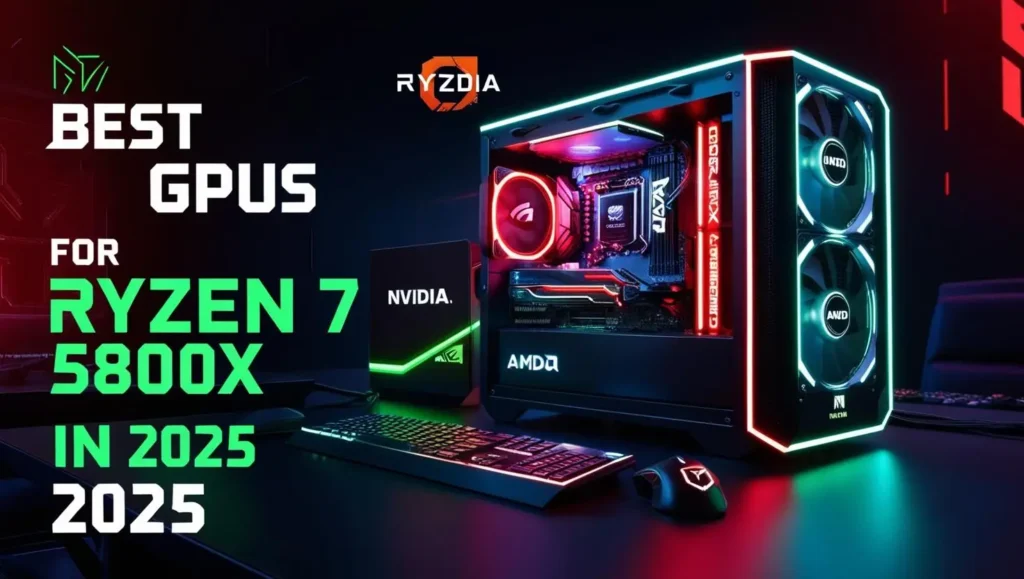
Choosing the right GPU is essential for getting the most out of your gaming or productivity setup, especially if you’re using the Ryzen 7 5800X. Despite being part of AMD’s older AM4 platform, this CPU remains a solid performer when paired with the right GPU. Whether you’re a casual gamer, a competitive esports enthusiast, or a content creator, this guide explores the top GPUs for Ryzen 7 5800X in every budget.
We’ll cover GPUs for 1080p gaming, VR, content creation, esports, and future-proofing, helping you make an informed decision. Plus, we’ll discuss the latest technologies like DLSS, FSR, ray tracing, and AV1 encoding. Let’s dive in!
Table of Contents:
- Why Best GPUs Selection Matters for Ryzen 7 5800X
- Top GPUs for Ryzen 7 5800X Under $300 for Gaming
- Best Power Efficiency GPUs for Ryzen 7 5800X
- Why Power Efficiency Matters
- 1. Nvidia GTX 1650: The Ultimate Low-Power Solution
- 2. Nvidia RTX 4060: Modern Performance with Low Power Consumption
- 3. AMD Radeon RX 7600: Affordable Efficiency with Modern Features
- 4. Nvidia RTX 3050: Entry-Level Efficiency with Ray Tracing
- Power Efficiency Comparison Table
- Buying Tips for Power-Efficient GPUs
- Top GPUs for Esports Gaming
- Why Esports Gamers Need High-Performance GPUs
- 1. Nvidia RTX 3060: A Versatile Performer for 1080p Esports
- 2. AMD RX 6700 XT: Exceptional Performance for High Refresh Rates
- 3. Nvidia GTX 1660 Super: Budget-Friendly with High Frame Rates
- 4. Intel Arc A750: A Rising Contender for Esports Gaming
- 5. Nvidia RTX 4060 Ti: The Premium Esports Choice
- Esports GPU Performance Comparison
- Esports GPUs Buying Tips for Ryzen 7 5800X
- Best GPUs for VR and Content Creation
- Why VR and Content Creation Require High-Performance GPUs
- 1. Nvidia RTX 4070 Ti: A Powerhouse for VR and Creators
- 2. AMD Radeon RX 7900 XT: A VRAM-Heavy Beast for Creators
- 3. Nvidia RTX 4060 Ti: Affordable Entry into VR and Content Creation
- 4. AMD Radeon RX 6800: The Budget Workhorse
- VR and Content Creation GPU Performance Comparison
- VR and Content Creation GPUs Buying Tips for Ryzen 7 5800X
- DLSS vs FSR: Which is Better for Your Build?
- Future-Proofing: Best GPUs for Longevity
- Top Future-Proof GPUs
- Conclusion
- FAQs About the Best GPUs for Ryzen 7 5800X
- What is the best GPU for gaming at 1440p with the Ryzen 7 5800X?
- Are 12GB of VRAM enough for future-proofing?
- Can the Ryzen 7 5800X handle high-end GPUs like the RTX 4080?
- Is DLSS better than FSR for gaming?
- Which GPU is best for VR gaming with Ryzen 7 5800X?
- What is the most budget-friendly GPU for esports gaming?
- Are Nvidia GPUs better than AMD GPUs for content creation?
Why Best GPUs Selection Matters for Ryzen 7 5800X
The Ryzen 7 5800X is an 8-core, 16-thread processor based on AMD’s Zen 3 architecture. It’s capable of delivering impressive performance for gaming and multitasking. However, to unlock its full potential, pairing it with a modern GPU is crucial.
Also read AMD Ryzen 7 9800X3D Review
- PCIe 4.0 Support: The Ryzen 7 5800X supports PCIe 4.0, ensuring compatibility with the latest GPUs and faster data transfer speeds.
- Avoiding Bottlenecks: Pairing a low-end GPU with this CPU can result in underutilization, while a high-end GPU ensures optimal performance.
- Gaming Benefits: A modern GPU enhances frame rates, supports ray tracing, and ensures compatibility with features like DLSS and FSR.
Pro Tip: Always consider your monitor’s resolution and refresh rate when choosing a GPU to ensure you’re not over- or under-spending.
Top GPUs for Ryzen 7 5800X Under $300 for Gaming
The budget GPU market in 2024 offers incredible options for gamers seeking solid performance at 1080p and even 1440p resolutions. When paired with the Ryzen 7 5800X, these GPUs for gaming in 2024 provide exceptional value, delivering high frame rates in popular titles without bottlenecking the CPU. Whether you’re playing esports or exploring graphically demanding games, the options below highlight the best GPUs under $300 to maximize your gaming experience.
1. AMD Radeon RX 7600: The Budget Champion
The RX 7600 is AMD’s latest contender in the budget category, delivering excellent performance for 1080p gaming. It can also handle 1440p gaming with medium to high settings for most modern titles. Its RDNA 3 architecture provides significant efficiency improvements over previous generations, allowing it to deliver great visuals and smooth frame rates without overheating or consuming excessive power.
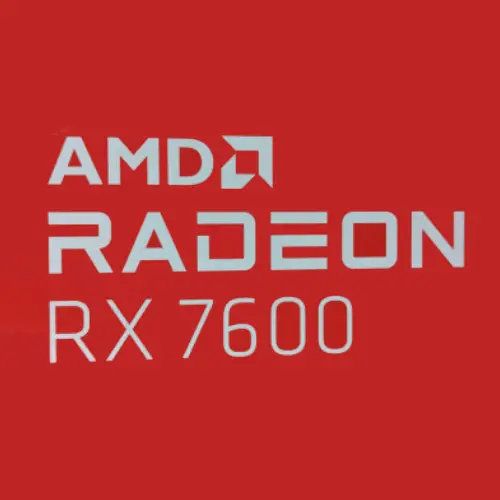
Verdict: If you’re seeking a balance of performance and cost, the RX 7600 is an unbeatable choice for budget gamers.
2. Intel Arc A770: The Hidden Gem
Intel’s Arc A770 GPU stands out with a whopping 16GB of VRAM, making it a fantastic option for gamers who value high-quality textures and future-proofing. While its performance in older DirectX 11 games can be inconsistent, Intel’s continuous driver updates have significantly improved its reliability in modern titles. The A770 also shines in productivity tasks, thanks to AV1 encoding and its robust memory bandwidth.
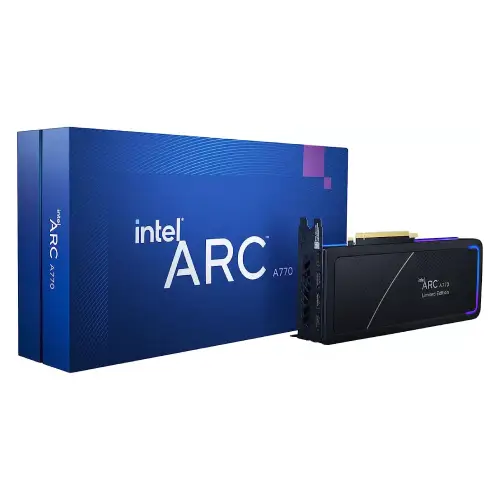
Verdict: The Intel Arc A770 is ideal for gamers looking for an alternative to AMD and Nvidia, offering excellent value for gaming and streaming setups.
3. Nvidia GTX 1660 Super: The Legacy Performer
The GTX 1660 Super remains a reliable option for gamers who prioritize stable performance at 1080p. While it lacks ray tracing and DLSS, its raw performance in rasterized games is impressive for its price. Titles like CS:GO, League of Legends, and GTA V run exceptionally well, making it a favorite among esports enthusiasts.
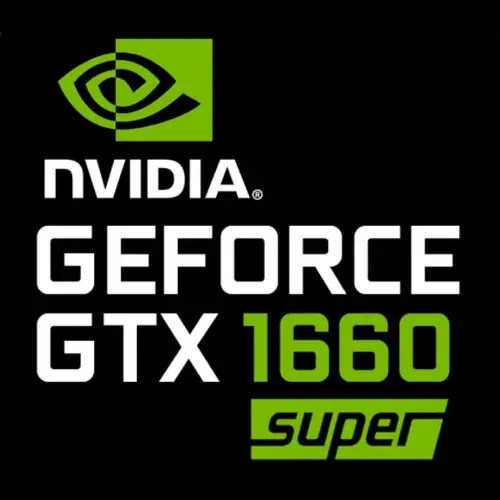
Verdict: The GTX 1660 Super is a safe choice for those building a budget-friendly gaming PC for esports or older AAA titles.
Comparative Analysis for Ryzen 7 5800X GPUs Under $300 for Gaming
| GPU Model | Price | Memory | Ray Tracing | Best Use Case | Power Draw |
|---|---|---|---|---|---|
| AMD Radeon RX 7600 | $270 | 8GB GDDR6 | Yes | 1080p/1440p Gaming | 165W |
| Intel Arc A770 | $300 | 16GB GDDR6 | Yes | Streaming & Modern 1080p Gaming | 225W |
| Nvidia GTX 1660 Super | $250 | 6GB GDDR6 | No | Esports & Older Titles | 120W |
Buying Advice for GPUs Under $300
- Choose RX 7600: If you want a reliable card for modern games and value FSR for performance boosts.
- Choose Arc A770: If you plan to stream or want a future-proof GPU with ample VRAM.
- Choose GTX 1660 Super: If your focus is on older games or esports titles and you don’t need ray tracing.
Pro Tip: Before buying, ensure your PSU (Power Supply Unit) can handle the GPU’s power draw and that your case has enough space for the card.
Best Power Efficiency GPUs for Ryzen 7 5800X
Power efficiency is a critical factor for many PC builders, particularly those with compact builds, limited airflow, or a focus on reducing electricity costs. Pairing the Ryzen 7 5800X with a power-efficient GPU ensures optimal system performance without overheating or stressing the power supply unit (PSU). Below, we explore the best GPUs that strike a balance between performance and power consumption in 2024.
Why Power Efficiency Matters
- Compact Builds: Small Form Factor (SFF) cases have limited cooling capabilities, making low-power GPUs ideal.
- Energy Savings: Energy-efficient GPUs reduce electricity costs for users who game or work long hours.
- Thermal Management: Lower power draw often translates to lower heat output, which prolongs hardware life.
1. Nvidia GTX 1650: The Ultimate Low-Power Solution
The GTX 1650 is one of the most power-efficient GPUs available, requiring no external power connector. It’s an excellent choice for casual gaming at 1080p, running titles like Minecraft, League of Legends, and Rocket League at 60+ FPS on medium settings. Despite being an older card, it remains a reliable option for low-power systems.
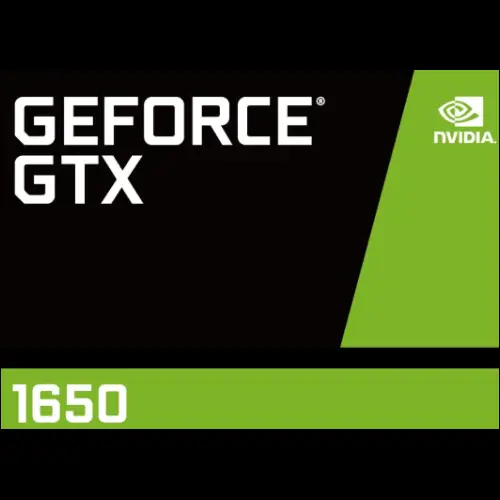
Best Use Case: Entry-level gaming PCs, home theater PCs (HTPCs), or compact builds where power and space are limited.
Verdict: The GTX 1650 is perfect for non-demanding gamers or those building ultra-compact rigs with minimal cooling capabilities.
2. Nvidia RTX 4060: Modern Performance with Low Power Consumption
The RTX 4060 offers modern gaming performance with features like ray tracing and DLSS 3. It’s designed for 1080p gaming, delivering high frame rates in AAA titles like Cyberpunk 2077 and Hogwarts Legacy. With a 160W power draw, it balances efficiency and capability, making it ideal for mid-range gaming builds.
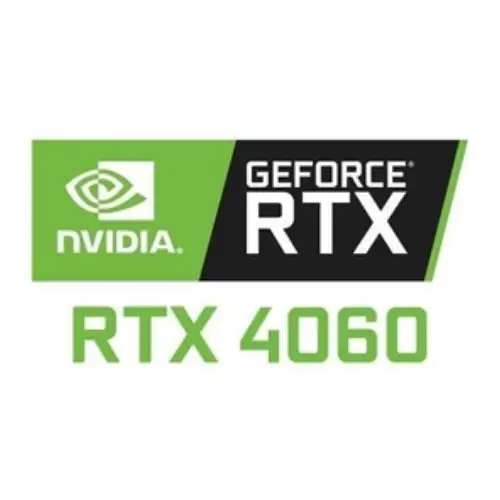
Best Use Case:Gamers seeking a balance of power efficiency and modern features for 1080p or light 1440p gaming.
Verdict: For users looking for a modern and power-efficient GPU with excellent 1080p gaming capabilities, the RTX 4060 is a standout option.
3. AMD Radeon RX 7600: Affordable Efficiency with Modern Features
AMD’s RX 7600 delivers great 1080p performance and can handle some 1440p gaming at medium settings. Its RDNA 3 architecture improves power efficiency over previous generations, and it supports FidelityFX Super Resolution (FSR) for better performance in supported titles. With a 165W power draw, it offers excellent value without significant power or thermal concerns.

Best Use Case: Budget-friendly gaming builds that prioritize power efficiency without sacrificing modern features.
Verdict: The RX 7600 is a power-efficient GPU that offers the best value in its price range, balancing modern features with low energy consumption.
4. Nvidia RTX 3050: Entry-Level Efficiency with Ray Tracing
The RTX 3050 is an entry-level GPU that brings ray tracing and DLSS to budget-conscious gamers. It’s efficient, drawing only 130W, and performs well in 1080p gaming for titles like Valorant, FIFA 23, and Assassin’s Creed Valhalla.
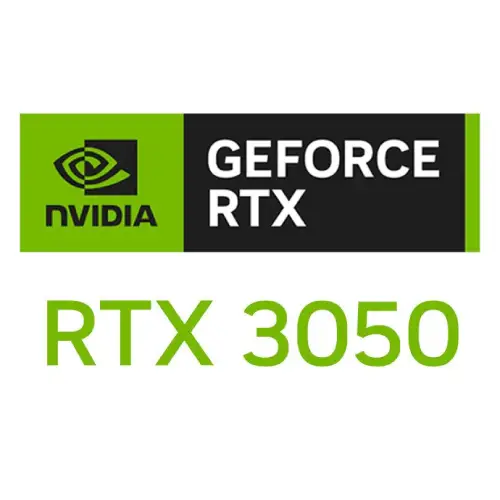
Best Use Case: Budget gaming PCs that require modern features like ray tracing and DLSS but with a lower power footprint.
Verdict: The RTX 3050 is a great choice for those wanting a modern GPU with a low power draw and access to Nvidia’s ecosystem of features.
Power Efficiency Comparison Table
| GPU Model | Power Draw | Performance Tier | Key Features | Best Use Case |
|---|---|---|---|---|
| Nvidia GTX 1650 | 75W | Entry-level | Ultra-low power, no RT/DLSS | HTPCs, casual gaming |
| Nvidia RTX 4060 | 160W | Mid-range | DLSS 3, ray tracing | 1080p gaming, compact builds |
| AMD RX 7600 | 165W | Mid-range | FSR, ray tracing | 1080p/1440p gaming, budget builds |
| Nvidia RTX 3050 | 130W | Entry-level | DLSS, ray tracing | Budget gaming with RT/DLSS |
Buying Tips for Power-Efficient GPUs
- Check PSU Compatibility: Ensure your PSU has enough wattage to support the GPU. For low-power GPUs like the GTX 1650, a 300-400W PSU is sufficient, but higher cards like the RX 7600 may require 500W or more.
- Consider Cooling Needs: Even efficient GPUs produce heat. Ensure your case has proper airflow, especially for compact builds.
- Plan for Future Upgrades: If you plan to upgrade other components later, choose a GPU that won’t bottleneck future CPUs or motherboards.
Top GPUs for Esports Gaming
Esports titles like CS:GO, Valorant, League of Legends, Dota 2, and Overwatch are designed to run efficiently on a wide range of hardware, often prioritizing high frame rates and low latency over cutting-edge graphics. This makes GPU selection for esports a bit different compared to AAA gaming. Below, we dive into the best GPUs that maximize performance for competitive esports while complementing the Ryzen 7 5800X.
Why Esports Gamers Need High-Performance GPUs
- High Frame Rates: Competitive esports players aim for frame rates above 144 FPS to take full advantage of high refresh rate monitors (144Hz, 240Hz, or even 360Hz).
- Low Latency: A powerful GPU reduces rendering times, ensuring smoother gameplay and a competitive edge.
- Optimized Graphics Settings: Esports titles are often played on low to medium settings to prioritize responsiveness and visibility, making raw FPS performance a key metric.
1. Nvidia RTX 3060: A Versatile Performer for 1080p Esports
The Nvidia RTX 3060 is an excellent choice for esports gamers looking to achieve frame rates above 144 FPS at 1080p and even 240 FPS in less demanding titles like League of Legends and Valorant. With its ample 12GB of VRAM, it’s also capable of handling future esports games with ease. Ray tracing and DLSS support make it versatile enough for other gaming genres.
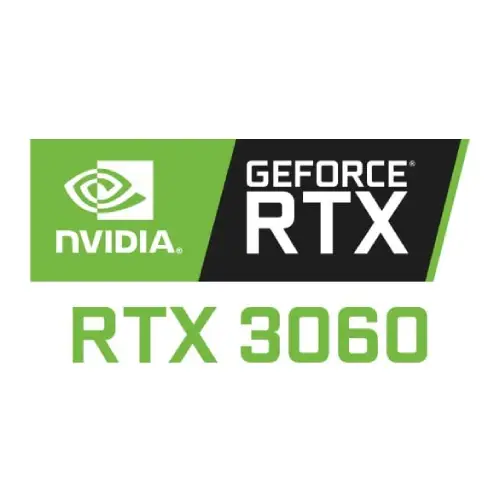
Best Use Case: Competitive esports players who want consistent performance at 1080p with the flexibility to play more demanding games at medium settings.
Verdict: The RTX 3060 is perfect for gamers who enjoy esports but occasionally venture into AAA gaming territory.
2. AMD RX 6700 XT: Exceptional Performance for High Refresh Rates
The RX 6700 XT delivers impressive frame rates for esports titles at 1080p and 1440p. It’s designed to excel with high-refresh-rate monitors, making it ideal for games like Fortnite and Overwatch 2. Its RDNA 2 architecture provides competitive performance and slightly better raw power than the RTX 3060 in rasterized games.
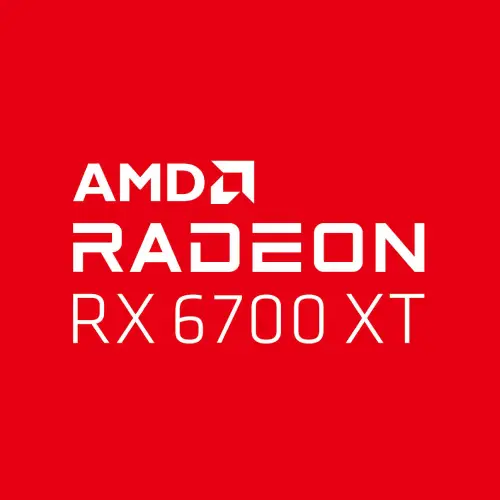
Best Use Case: Esports enthusiasts with high-refresh-rate monitors (240Hz or higher) seeking top-tier performance at a reasonable price.
Verdict: The RX 6700 XT is a powerful option for esports players aiming for 240+ FPS, especially in non-ray-traced games.
3. Nvidia GTX 1660 Super: Budget-Friendly with High Frame Rates
The GTX 1660 Super is a reliable choice for budget-conscious esports players. It consistently delivers frame rates well above 144 FPS in most competitive titles at 1080p with medium to high settings. While it lacks modern features like ray tracing and DLSS, its performance is more than sufficient for esports-focused gamers.

Best Use Case: Entry-level gaming PCs focused purely on competitive esports titles.
Verdict: The GTX 1660 Super remains a great option for those prioritizing frame rates and affordability over next-gen features
4. Intel Arc A750: A Rising Contender for Esports Gaming
The Intel Arc A750 delivers excellent 1080p and 1440p performance for esports titles at a competitive price. With continuous driver updates, Intel has improved the GPU’s stability and compatibility, making it a solid choice for competitive gamers. Additionally, AV1 encoding makes it a great pick for streaming.
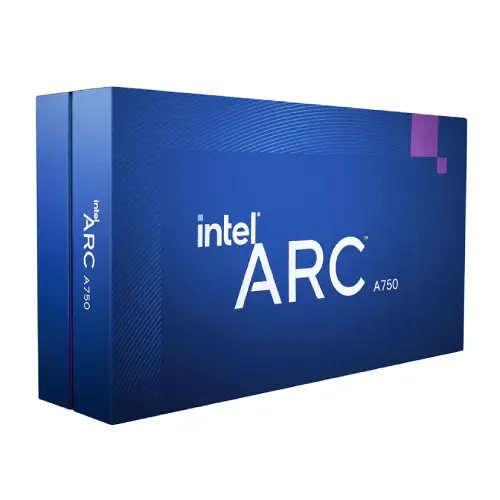
Best Use Case: Gamers and streamers who want a budget-friendly option for esports and content creation.
Verdict: The Intel Arc A750 is ideal for budget-conscious gamers looking to explore Intel’s GPU ecosystem while enjoying competitive esports.
5. Nvidia RTX 4060 Ti: The Premium Esports Choice
The RTX 4060 Ti offers unbeatable frame rates for esports titles at 1080p, with the ability to push beyond 240 FPS in optimized games like CS:GO and Valorant. With ray tracing and DLSS 3 support, it’s also capable of providing immersive graphics for non-competitive games.
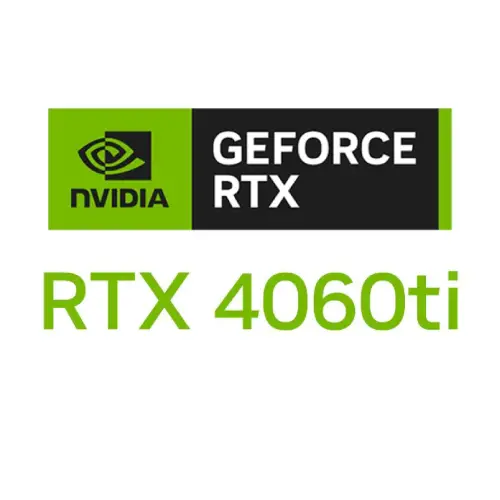
Best Use Case: Professional esports players and streamers who want top-tier performance without sacrificing power efficiency.
Verdict: For competitive gamers seeking the best blend of performance, efficiency, and modern features, the RTX 4060 Ti is hard to beat.
Esports GPU Performance Comparison
| GPU Model | Price | Frame Rates (1080p) | Best Features | Best For |
|---|---|---|---|---|
| Nvidia RTX 3060 | ~$330 | 144–240 FPS | DLSS, ray tracing | Versatile gaming/esports |
| AMD RX 6700 XT | ~$370 | 144–240+ FPS | High VRAM, excellent rasterization | High-refresh-rate monitors |
| Nvidia GTX 1660 Super | ~$250 | 144–200 FPS | Affordable and efficient | Budget esports builds |
| Intel Arc A750 | ~$250 | 144–240 FPS | AV1 encoding, budget-friendly RT | Gaming and streaming |
| Nvidia RTX 4060 Ti | ~$370 | 240+ FPS | DLSS 3, low power draw | Pro esports and streaming |
Esports GPUs Buying Tips for Ryzen 7 5800X
- Monitor Refresh Rate: Ensure your GPU can consistently deliver FPS that matches or exceeds your monitor’s refresh rate (e.g., 144Hz, 240Hz).
- Optimize Settings: Most esports players prefer low to medium settings for better visibility and responsiveness.
- Streaming Considerations: If you plan to stream, prioritize GPUs with AV1 encoding (e.g., Arc A750, RTX 3060).
Best GPUs for VR and Content Creation
Virtual reality (VR) gaming and content creation demand high-performance GPUs with unique capabilities. For VR, smooth frame rates, low latency, and high-resolution support are essential to deliver an immersive experience. For content creators, tasks like video editing, 3D rendering, and streaming require powerful GPUs with ample VRAM and advanced encoding features. Below, we’ll explore the best GPUs for VR and content creation, perfectly paired with the Ryzen 7 5800X.
Why VR and Content Creation Require High-Performance GPUs
- VR Gaming:
- High frame rates are critical to avoid motion sickness, with 90 FPS being the minimum standard.
- Low latency ensures real-time responsiveness for an immersive experience.
- Support for VR platforms like Oculus, HTC Vive, or Valve Index demands significant GPU power.
- Content Creation:
- Rendering 4K video or 3D models requires robust compute power and VRAM capacity.
- Real-time playback in editing software like Premiere Pro or Blender benefits from GPUs with advanced hardware acceleration.
- Encoding formats like AV1 improve streaming quality while reducing resource use.
1. Nvidia RTX 4070 Ti: A Powerhouse for VR and Creators
The RTX 4070 Ti offers exceptional performance for both VR gaming and content creation. Its 12GB GDDR6X memory and Ada Lovelace architecture ensure smooth performance for VR platforms and intensive editing tasks. It supports DLSS 3, which enhances frame rates in VR games, and its AV1 hardware encoding makes it ideal for streamers and video editors.
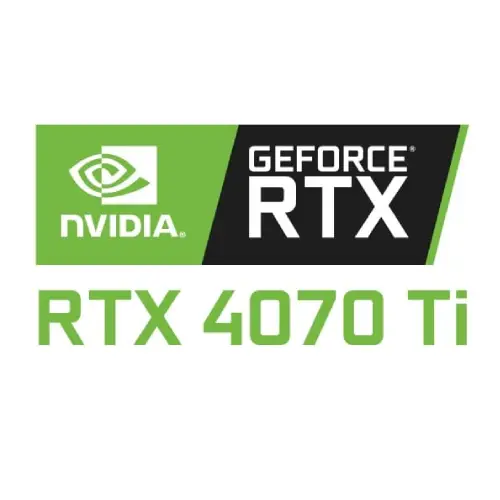
Best Use Case: VR gamers and creators working with 4K video editing, live streaming, or rendering in applications like Blender.
Verdict: The RTX 4070 Ti is an all-in-one solution for gamers and creators looking to push the limits of VR and video editing.
2. AMD Radeon RX 7900 XT: A VRAM-Heavy Beast for Creators
With 20GB of VRAM and a 320-bit memory bus, the RX 7900 XT excels at handling large textures and high-resolution assets. It’s particularly effective for VR gaming, where its memory capacity supports demanding titles. For creators, the VRAM ensures smooth editing workflows and the ability to work with multiple 4K streams in real time.
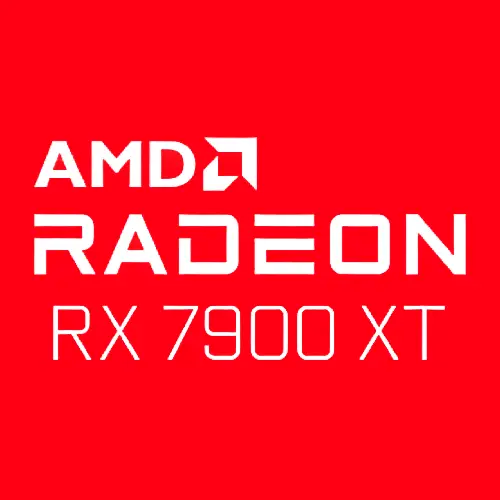
Best Use Case: Professional creators needing robust rendering and multitasking performance with VR gaming as a secondary use case.
Verdict: The RX 7900 XT is a must-have for content creators needing massive VRAM, especially for 3D modeling and multi-stream editing.
3. Nvidia RTX 4060 Ti: Affordable Entry into VR and Content Creation
The RTX 4060 Ti strikes a balance between price and performance, offering sufficient power for entry-level VR gaming and moderate content creation tasks. It supports ray tracing and DLSS 3 for immersive VR gaming and AV1 encoding for streaming and editing workflows. The 16GB version is better suited for creators needing additional VRAM for handling larger projects.

Best Use Case: Beginners or hobbyists in VR and content creation looking for cost-effective options.
Verdict: The RTX 4060 Ti is an excellent choice for those entering the world of VR gaming and content creation on a budget.
4. AMD Radeon RX 6800: The Budget Workhorse
The RX 6800 delivers strong performance for VR gaming and 4K content creation, thanks to its 16GB VRAM and high rasterization performance. It offers excellent value for creators working with Adobe Creative Suite or DaVinci Resolve and supports VR gaming with platforms like SteamVR.
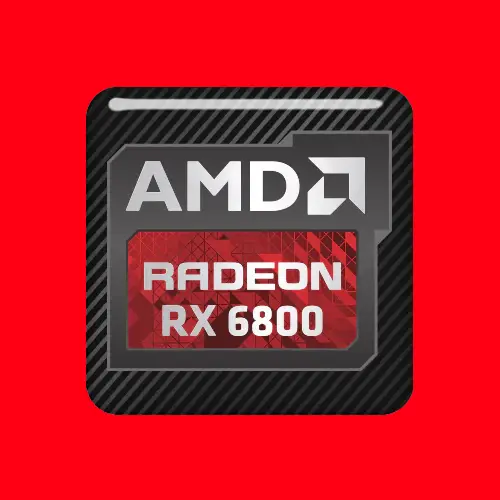
Best Use Case: Mid-range VR gamers and creators working on large-scale projects without breaking the bank.
Verdict: The RX 6800 is ideal for creators and gamers looking for high VRAM at a competitive price point.
VR and Content Creation GPU Performance Comparison
| GPU Model | Price | VRAM | Key Features | Best Use Case |
|---|---|---|---|---|
| Nvidia RTX 4070 Ti | ~$800 | 12GB | DLSS 3, ray tracing, AV1 encoding | High-end VR gaming and 4K content creation |
| AMD RX 7900 XT | ~$700 | 20GB | Massive VRAM, RDNA 3 | Professional 3D modeling and multitasking |
| Nvidia RTX 4060 Ti | ~$370 | 8GB/16GB | Entry-level DLSS and AV1 encoding | Beginner VR and moderate content creation |
| AMD RX 6800 | ~$500 | 16GB | Budget 4K editing and VR gaming | Mid-range content creation and VR gaming |
VR and Content Creation GPUs Buying Tips for Ryzen 7 5800X
- VR Needs High Frame Rates:
- For a smooth VR experience, aim for GPUs capable of 90 FPS or more at your headset’s resolution. The RTX 4070 Ti and RX 7900 XT are top choices.
- VRAM is Critical for Content Creation:
- GPUs with 12GB or more VRAM are essential for tasks like 3D rendering, working with 4K video, or running multiple creative software simultaneously.
- Encoding Support:
- AV1 encoding (available in RTX 40 series and Intel Arc GPUs) enhances streaming quality and speeds up video exports.
DLSS vs FSR: Which is Better for Your Build?
DLSS and FSR are game-changers, improving frame rates by upscaling from a lower When it comes to enhancing gaming performance without sacrificing visual fidelity, DLSS (Deep Learning Super Sampling) and FSR (FidelityFX Super Resolution) are game-changing technologies. Both aim to improve frame rates by upscaling lower-resolution images to higher resolutions, but they do so in unique ways and cater to different audiences. Below, we’ll dive into the details, compare their strengths and weaknesses, and help you determine which technology is better for your gaming build.
.What Are DLSS and FSR?
DLSS (Deep Learning Super Sampling)
- Developed by Nvidia, DLSS leverages AI and deep learning to upscale game resolution in real time.
- It uses Tensor Cores available on Nvidia RTX GPUs to process data and create high-resolution images from lower-resolution frames.
- DLSS works exclusively on Nvidia GPUs (RTX 20, 30, and 40 series).
FSR (FidelityFX Super Resolution)
- Created by AMD, FSR is an open-source upscaling technology designed to enhance performance across a wide range of hardware, including both AMD and Nvidia GPUs.
- Unlike DLSS, it doesn’t rely on proprietary AI cores, making it accessible on a broader range of GPUs.
- FSR has two versions: FSR 1.0, which uses spatial upscaling, and FSR 2.0, which employs temporal upscaling for better image quality.
How They Work
DLSS Workflow:
- The game renders at a lower resolution to save computational power.
- AI-based algorithms upscale the image to a higher resolution, filling in the details.
- Nvidia Tensor Cores process deep-learning models trained on high-resolution game data, resulting in sharper, more detailed upscaled images.
FSR Workflow:
- The game renders at a lower resolution.
- Spatial (FSR 1.0) or temporal (FSR 2.0) algorithms upscale the image without relying on AI cores.
- The result is an upscaled image, but the method relies heavily on game-engine integration for quality.
Key Differences Between DLSS and FSR
| Feature | DLSS | FSR |
|---|---|---|
| Developer | Nvidia | AMD |
| Hardware Support | RTX 20, 30, and 40 series GPUs | AMD GPUs and some Nvidia GPUs |
| AI Integration | Yes, Tensor Cores | No |
| Image Quality | Higher due to AI processing | Good but slightly less detailed |
| Performance Boost | Excellent | Great, but slightly lower |
| Game Support | Limited to Nvidia-supported games | Broader support across GPUs |
| Open Source | No | Yes |
Advantages of DLSS
- Superior Image Quality: AI-powered algorithms create sharper and more detailed upscaled images, especially at higher resolutions.
- Better Frame Rates: DLSS often provides higher FPS compared to FSR because of its AI-driven efficiency.
- Ray Tracing Synergy: DLSS complements ray tracing, making RTX GPUs the go-to choice for visually intensive games.
- Advanced Modes: DLSS 3.0 introduces Frame Generation, which creates additional frames for smoother gameplay on RTX 40 series GPUs.
Best Use Case: Gamers who prioritize image quality and play games with ray tracing enabled, especially at 1440p or 4K.
Advantages of FSR
- Wider Hardware Compatibility: Works on both AMD and Nvidia GPUs, including older models without AI cores.
- Open Source: Its open-source nature allows developers to integrate FSR into games more easily.
- Broad Game Support: Due to its simplicity, FSR is supported in a wide range of games.
- Low Entry Cost: Gamers with budget GPUs can enjoy improved performance without upgrading to an RTX card.
Best Use Case: Budget-conscious gamers or those using GPUs without DLSS support, such as older Nvidia GTX cards or AMD RX GPUs.
Which is Better for Your Build?
Choose DLSS If:
- You own an Nvidia RTX GPU (20, 30, or 40 series).
- You play games with ray tracing or demand the best image quality.
- You’re gaming at 1440p or 4K and want smooth frame rates without sacrificing detail.
Choose FSR If:
- You use an AMD GPU or a non-RTX Nvidia GPU.
- You’re gaming on a budget and want performance boosts without upgrading your hardware.
- You prioritize broader compatibility and open-source flexibility.
Future-Proofing: Best GPUs for Longevity
When investing in a GPU, longevity is a critical consideration. Future-proof GPUs ensure you don’t need frequent upgrades, saving money and providing consistent performance for years. With games demanding higher VRAM, advanced upscaling technologies, and ray tracing capabilities, it’s essential to choose a GPU that meets current needs and stays relevant for future developments. Below, we explore the best GPUs for future-proofing, tailored for Ryzen 7 5800X builds.
What Makes a GPU Future-Proof?
- Ample VRAM: Modern games increasingly require higher VRAM (e.g., 12GB+), especially at 1440p or 4K resolutions.
- Advanced Technologies:
- Support for ray tracing and upscaling technologies like DLSS or FSR ensures compatibility with cutting-edge game engines.
- PCIe 4.0/5.0 Support: Ensures compatibility with modern motherboards and faster data transfer.
- Longevity in Performance: The ability to run new AAA titles at acceptable settings and resolutions over the next 4–5 years.
Top Future-Proof GPUs
- MSI Nvidia RTX 4080: High-End Power for the Long Haul
- XFX Mercury AMD Radeon RX 7900 XTX: The VRAM Champion
- ASUS Dual GeForce RTX™ 4070 Super: A Sweet Spot for Longevity and Price
- GIGABYTE AMD Radeon RX 7800 XT: Best Value for Longevity
Comparison Table: Best Future-Proof GPUs
| GPU Model | Price | VRAM | Best Use Case | Longevity Features |
|---|---|---|---|---|
| Nvidia RTX 4080 | ~$1,200 | 16GB | 4K gaming, ray tracing, DLSS 3.0 | Advanced AI features, high ray tracing power |
| AMD RX 7900 XTX | ~$1,000 | 24GB | 4K/8K textures, raster gaming | Massive VRAM, powerful raster performance |
| Nvidia RTX 4070 | ~$600 | 12GB | 1440p/4K gaming on a budget | Efficient DLSS 3.0, ray tracing support |
| AMD RX 7800 XT | ~$500 | 16GB | 1440p gaming, VRAM-heavy tasks | Affordable 16GB VRAM for future workloads |
Buying Tips for Future-Proof GPUs
- Prioritize VRAM: For longevity, 12GB should be the minimum, with 16GB or more being ideal for 4K gaming or creative workloads.
- Consider Future Technologies:
- Choose GPUs with DLSS 3.0 (Nvidia) or FSR 2.0/3.0 (AMD) for better frame rates in upcoming titles.
- Look for AV1 encoding support for future-proof streaming and content creation.
- Don’t Overpay for Overkill: Match your GPU to your resolution and monitor refresh rate to avoid unnecessary expenses.
Conclusion
Choosing the right GPU can significantly enhance your Ryzen 7 5800X build. Whether you’re gaming at 1080p, exploring VR, or creating content, there’s a GPU for every budget and use case. By considering factors like resolution, refresh rate, and power efficiency, you can future-proof your rig while staying within your budget.
FAQs About the Best GPUs for Ryzen 7 5800X
What is the best GPU for gaming at 1440p with the Ryzen 7 5800X?
The AMD Radeon RX 7800 XT and Nvidia RTX 4070 are excellent choices for 1440p gaming. Both offer sufficient VRAM (16GB and 12GB, respectively) and great performance in modern AAA titles. The RTX 4070 has the added advantage of DLSS 3.0 for higher frame rates in supported games.
Are 12GB of VRAM enough for future-proofing?
For most gaming and content creation at 1440p, 12GB of VRAM is adequate. However, for 4K gaming or workloads involving large textures (like 3D rendering), consider GPUs with 16GB or more VRAM, such as the AMD RX 7800 XT or RX 7900 XTX.
Can the Ryzen 7 5800X handle high-end GPUs like the RTX 4080?
Yes, the Ryzen 7 5800X can handle high-end GPUs like the RTX 4080 without significant bottlenecking, especially at 1440p or 4K resolutions. Pairing it with such GPUs ensures excellent performance across current and future titles.
Is DLSS better than FSR for gaming?
DLSS offers better image quality and performance due to its AI-driven upscaling. However, FSR is more accessible, as it works on both AMD and Nvidia GPUs and doesn’t require AI-specific hardware. For Nvidia GPU users, DLSS is the better choice, while FSR is ideal for AMD users or those with older GPUs.
Which GPU is best for VR gaming with Ryzen 7 5800X?
The Nvidia RTX 4070 Ti and AMD RX 7900 XT are top picks for VR gaming. Both deliver high frame rates, low latency, and support for modern VR platforms. The RTX 4070 Ti’s DLSS 3.0 gives it an edge in games that support upscaling.
What is the most budget-friendly GPU for esports gaming?
The Nvidia GTX 1660 Super and Intel Arc A750 are excellent budget-friendly options for esports gaming. Both deliver high frame rates at 1080p, with the Arc A750 offering additional features like AV1 encoding for streaming.
Are Nvidia GPUs better than AMD GPUs for content creation?
Nvidia GPUs, particularly the RTX 40 series, are generally better for content creation due to advanced features like DLSS 3.0, AV1 encoding, and CUDA cores optimized for productivity software. However, AMD GPUs with high VRAM, like the RX 7900 XTX, excel in tasks involving large textures and 3D rendering.
